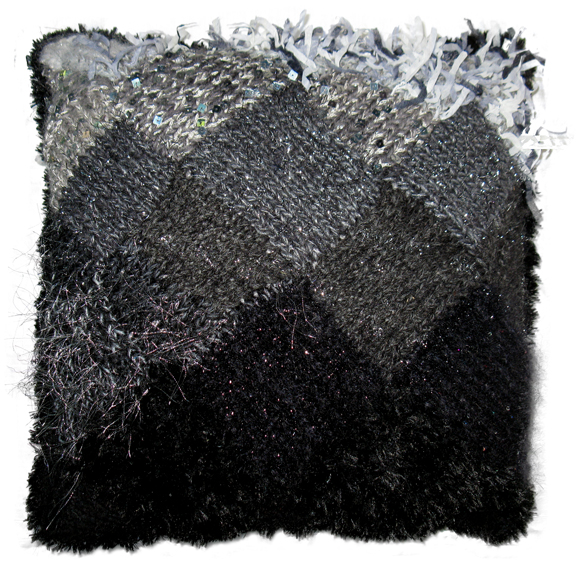I was working on sewing a printed silk charmeuse top a couple days ago, the one-shouldered tunic from my Santa Fe wardrobe. This top, I might say, was by far the most straightforward garment I’ve made in quite a while; I have a tendency to complicate things by, say, adding a sheer or lace layer, tuxedo stripes to pant legs, or maybe just choosing a fabric that makes matching stripes or patterns necessary. But since I’m working with a gorgeous print (rare for me), I decided to let the fabric do the talking.
The only issue I had was the hemming of the one sleeve. It’s a slightly belled shape that forms a curving hemline; it’s also the only place on the entire garment where stitching shows on the outside (I’m doing the lower hem by hand). And the soft, slinky, yes, silky nature of the fabric makes it among the more difficult to manipulate into a narrow hem, especially one stitched by machine.
Narrow hems: Usually, when a pattern says to finish a piece with a narrow hem, they mean a hem that’s folded under twice (hiding raw edges), then stitched. And since it’s called a narrow hem, it usually means 1/4″ wide, possibly slightly more.
I thought maybe I could do a modified version of the multi-step machine-stitched hem that I’ve used on chiffon; this technique involves stitching, trimming, stitching again, folding, pressing, stitching a third time. For my sleeve, the plan was to make good use of stay-stitching, mainly to stabilize the hem edge. (Remember the ripply original hem on my white linen skirt? This is how to avoid that.)
Stay-stitching: This is simply a line of stitching, usually worked inside the seam allowance, that’s not meant to be seen; its function is to stabilize, and sometimes to reinforce certain areas, such as the V of a v-neck, or a curving edge that needs to be clipped to lie flat.
Step 1: Stay-stitch 1/4″ from cut edge, fold to wrong side and press, just inside stitching line.
Tip: be careful to use a stitch length that’s a little on the long side (I used a stitch length of 3); this will help prevent puckering.
 Narrow hem, stitched 1/4″ from cut edge, folded to wrong side just inside stitching line, & pressed (in that order). Continue reading →
Narrow hem, stitched 1/4″ from cut edge, folded to wrong side just inside stitching line, & pressed (in that order). Continue reading →
 Beets, part of a delicious lunch at my sister’s house. Little did she know… Continue reading
Beets, part of a delicious lunch at my sister’s house. Little did she know… Continue reading 









